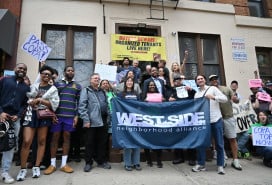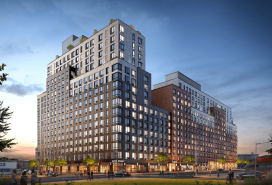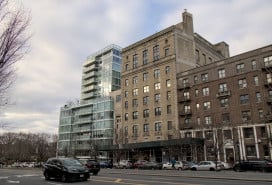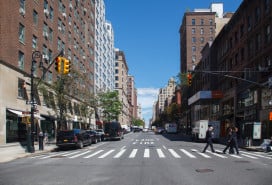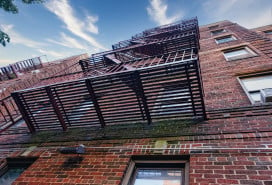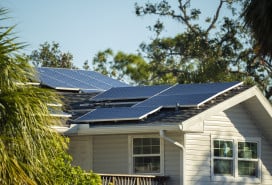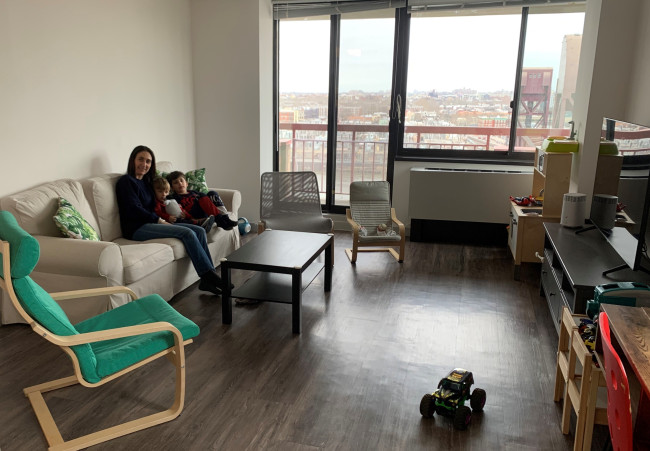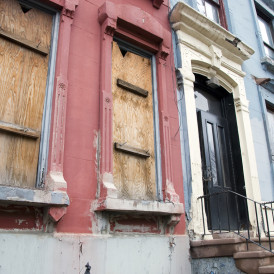Why NYC renters and buyers may be surprised by Roosevelt Island’s evolution
- Residents tout a quiet, suburban-like lifestyle despite being just minutes from Manhattan
- The island has been transformed by Cornell Tech, ground-up and conversion projects
- Riverwalk Heights, the last building in a 2,000-unit complex spanning 27 years, will open in 2024
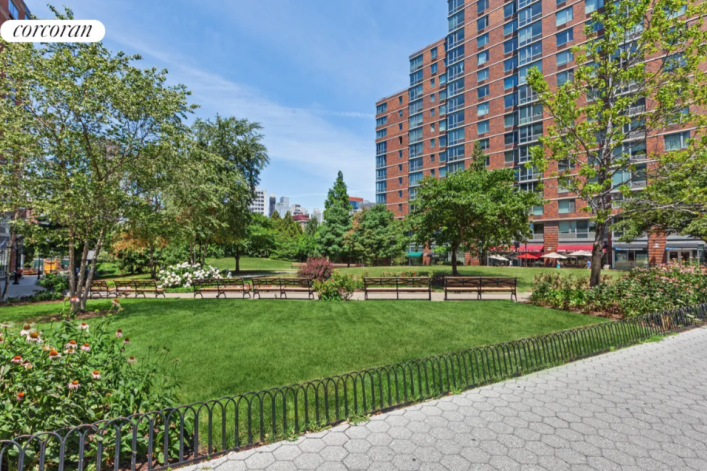
The lawn in front of Riverwalk Landing at 425 Main St., where penthouse PH1C is on the market for $2,250,000.
You can get to Roosevelt Island by subway, tram, ferry, or car. But even though the island is just a three-minute subway ride to the first stop in Manhattan, it’s not on the radar for many New York City apartment hunters.
Part of the issue is a lingering assumption that apartment buildings on Roosevelt Island are all public housing, thanks to the island’s former Mitchell Lama buildings, which were built in the 1970s and have a foreboding architecture style reminiscent of East Berlin. But there have been several waves of redevelopment and new construction, making the island a place today’s renters and buyers should consider.
Several big projects have changed the character of the island in recent years—these include the Cornell Tech research campus, Graduate New York hotel, and the Louis Kahn-designed Franklin D. Roosevelt Four Freedoms Park. The latest residential developments include Westview, which launched co-op sales in 2021 following a conversion and extensive renovation; and Riverwalk Heights, the last of a nine-building rental and condo development project, set to open in 2024.
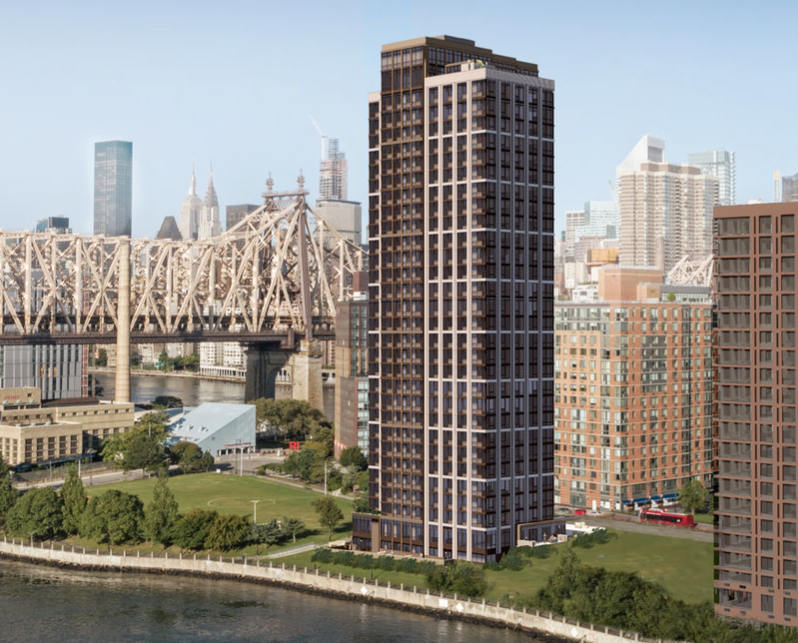
Developing market-rate housing
When the 2,000-unit Riverwalk project first launched 27 years ago, it was an open question as to whether developers could succeed in creating market-rate rentals and condos on Roosevelt Island without relying on government subsidies.
“We were able to establish that there is demand for market-rate apartments,” said David Kramer, president of the Hudson Companies, which partnered with the Related Companies on the Riverwalk neighborhood as well as other retail projects on the island.
That demand is due to Roosevelt Island’s unique location in the East River—so close to Manhattan and Queens yet separate enough to be quiet and peaceful, with incredible views and a “country-in-the-city” feeling, Kramer said.
Not a major destination
Still, unless you already live here or know someone here, it’s not a major destination for New Yorkers. But tourists often make their way over by tram to explore the remnants of the island’s dark history (in the 1800s, it held a prison, insane asylum, and smallpox hospital) as well as its modern attractions, like drinks at Panorama Room, a rooftop bar at the Graduate New York hotel. A new must for visitors: Taking a selfie in front of the giant letters spelling RI near the ferry stop, a feature that Hudson and Related paid for and built.
“A lot of people don’t know the F train stops here,” Kramer said. “Or that it is three stops to Rockefeller Center. The people who live here appreciate that it is so close and convenient to Manhattan, yet when you’re here it has a different vibe thanks to its open space.”
The last Riverwalk
Riverwalk Heights, a 28-story building, will have 357 luxury rentals, including 104 residences reserved for Memorial Sloan Kettering Cancer Center employees and 253 luxury, market-rate residences. Unit types range from studio to two bedrooms.
On the lower level will be a children’s room, gym, terrace, bike storage and a dog washing station. On the roof, there will be a lounge, party room, dining room, game room, co-working lounge and barbecue stations.
Outdoor amenities include park space with a dog run, children’s play area, picnic areas accessible to tenants and Roosevelt Island residents.
Kramer said that in general, rents at Riverwalk buildings offer a 15 percent discount compared to the Upper East Side and that his firm’s buildings are “competitive with high-end Manhattan market rentals in terms of amenities.”
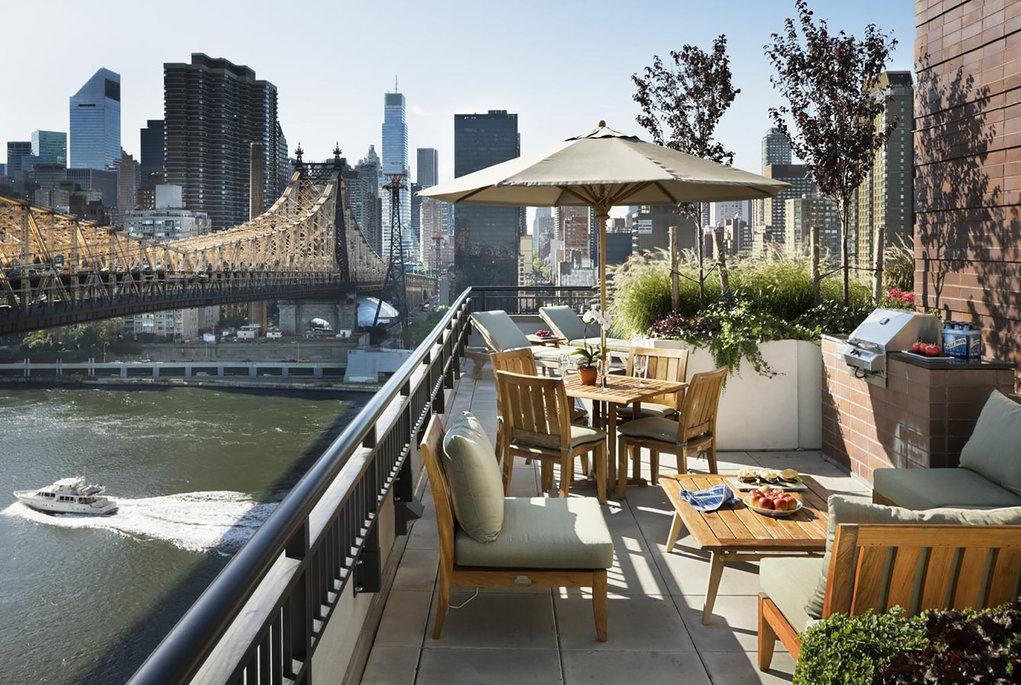
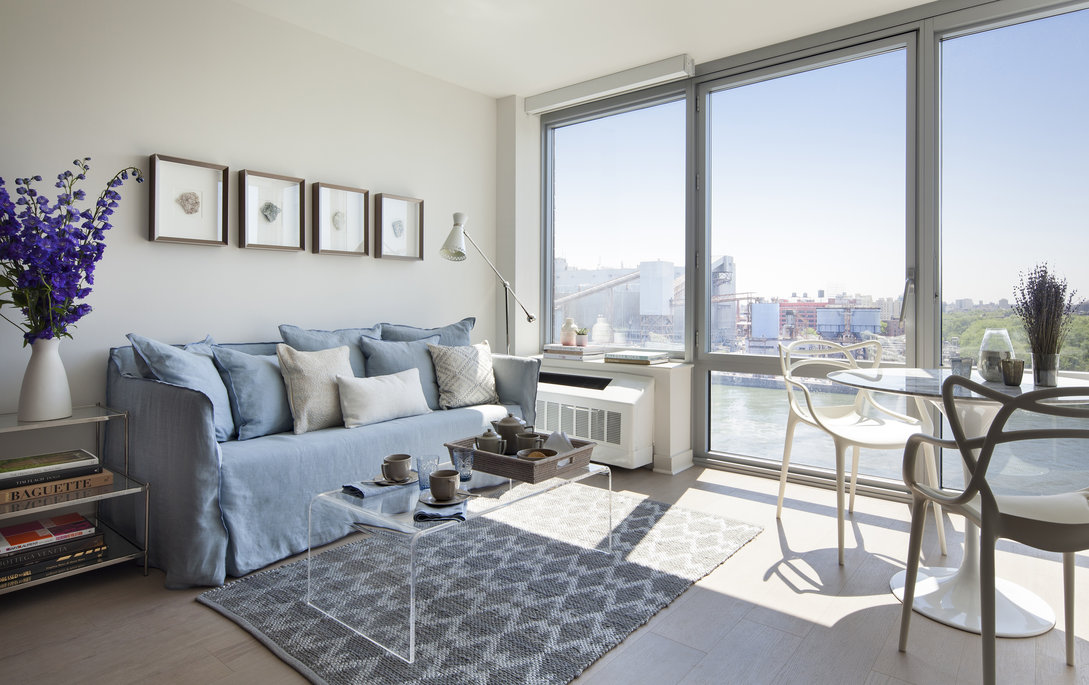
Incentives for buyers
Alyssa Soto Brody, co-founder at Development Marketing Team, which handles sales and marketing for Westview, said there are tax incentives available to buyers, a result of private developers converting the Mitchell Lama building to a co-op.
With the conversion of the 361-unit building by WV Preservation Partners—residents got the first chance at buying their units in original condition for a substantial discount and a large percentage have done so. WV Preservation Partners, led by David Hirschhorn, also redeveloped Island House.
Westview has a mix of studio, one-, two- and three-bedroom floor plans. The upgraded units feature hardwood oak flooring, custom kitchen cabinets, and porcelain and marble baths with high-end fixtures. Amenities include a new gym and pool, upgraded lobby, 24-hour doorman, a resident lounge, and community laundry rooms.
Westview recently achieved the second-highest sale on Roosevelt Island when a three-bedroom sold for $1,850,000.
The building has a 10-year tax phase-in, which means that if you buy today, when your tax bill arrives in 2025, you pay 10 percent; the following year, you pay 20 percent; and so on until you pay the full amount for the final year. Island House has a five-year tax phase-in.
In addition, the entire island is owned by the city and therefore has a ground lease, which comes due in 2068. While ground leases sometimes create headaches for owners when they sell, Soto Brody said most buyers are comfortable with the terms of the ground lease.
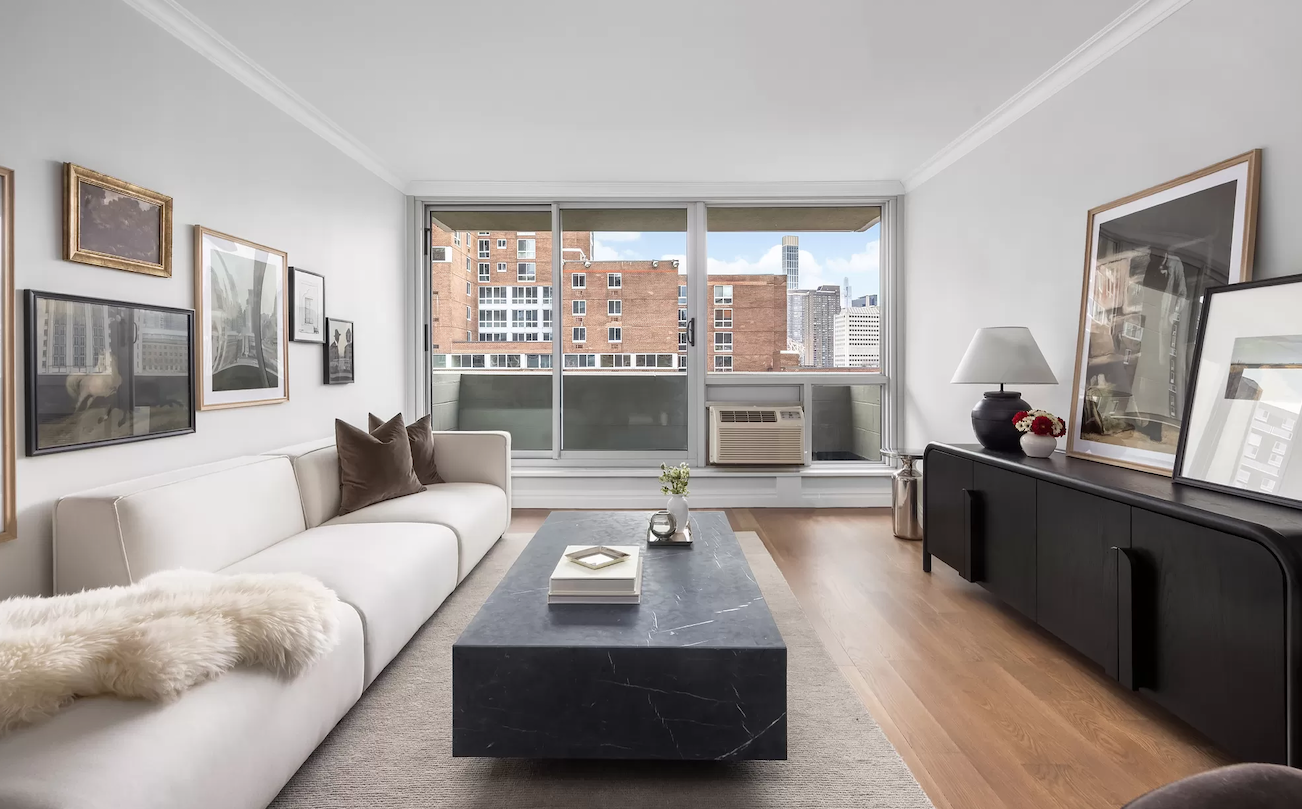
Like a ‘waterfront suburb’
Soto Brody likened Roosevelt Island to a waterfront suburb with a small-town feel, heightened by its parks, tennis courts, and recently renovated library. There’s much to do outside: In addition to four-acre FDR Four Freedoms Park at the southern tip of the island, there is the three-acre Lighthouse Park at the northern end, plus a waterfront promenade encircling the island.
Residents can take a dip in an artist-decorated waterfront pool next to the Manhattan Park luxury rental building. (Tip: non-island residents can buy a day pass.)
Soto Brody contends there are more transportation options here than other NYC neighborhoods. She said parking is available on the island and thanks to multiple transit options, “it is easier to get to than Park Slope.”
Transforming The Octagon
Soto Brody pointed out that real estate on the island has been through some major evolutions, but perhaps the most dramatic is the redevelopment of The Octagon, a distinctive domed building that was home to one of the first institutions in the U.S. to treat the mentally ill during the late 1800s and early 1900s. According to the website for the Roosevelt Island Operating Corporation, “it was believed that the soothing, natural surroundings would be conducive to rehabilitation.”
Fast forward to the the early 2000s, when the building became luxury rentals: Two new residential wings were developed, creating 500 rental units, along with a two-acre park. Amenities include a private courtyard with a pool, gym, yoga studio and tennis courts. Current available units range from a 423-square-foot studio for $3,256 a month to a three bedroom, two bath with 1,316 square feet for $7,682.
In a 2017 article, Brick contributor Bill Egbert wrote about what it is like to live at The Octagon at the northern tip, calling it the “most beautiful building on the island,” noting the $2,025 rent “was more than reasonable for a place just a few subway stops away from Midtown.
(For more on what it’s like to live on Roosevelt Island, a resident and former Brick contributor Nikki Mascali addressed the questions she receives about grocery stores, commuting, and whether the island is in fact haunted.)

Most building are named ‘River’
Kaja Meade, an agent at Corcoran, has lived at Roosevelt Island’s Rivercross, a former Mitchell Lama building, for the past 10 years. She previously rented at Riverwalk Crossing at 405 Main St. for two years. She said the similarity of building names on the island does get confusing. To help tell them apart, locals refer to co-ops by names and rentals by address.
There are four former Mitchell Lama buildings on the island (three were developed as rental buildings and one an ownership building). These buildings were known as the WIRE buildings: Westview, Island House, Rivercross, and Eastwood (now called The Landings). At the time, Mitchell Lama buildings offered affordable housing opportunities with income limits and an application process.
Three of the Mitchell Lama buildings are now co-ops. Meade points out the units have larger footprints than typical new development. Units are available either at market rate, or in some cases, part of an "affordability plan" at Island House and Westview.
She’s the sales manager for Hudson's and Related’s condo building 425 Main St. Earlier this year, she sold a four bedroom for over $2 million at Rivercross, the highest price point ever. “We should hit that high again,” she said. The owners were the first family to live at Rivercross—they moved into their unit in 1976, according to the New York Post.
Roosevelt Island is like “living in park” thanks to its plentiful outdoor space, Meade said. After spending the day in Manhattan, “I feel like I can breathe when I get home,” she added.
Meade says it’s a close-knit area. “It feels like you’re living in a small town, but you can have anonymity if that’s how you want to live your life.” Still, if you walk down the street you will see people you know. Her 10 year old can go out to play unaccompanied. “They can be kids,” she said.
Sellers can still struggle
Meade said sellers wonder why the island lifestyle isn’t more in demand. “It’s a puzzle for sellers. We’re selling renovated places with stunning views, why isn’t this moving?”
It’s especially curious considering buyers can get more square feet for their money, lower monthlies, expansive views, and a tax abatement if they buy a condo at 425 or 455 Main.
One possible explanation: Some New Yorkers may not want to be dependent on using mass transit or paying for an Uber when they dine out or catch a show. Retail and restaurants on the island continue to be developed but if you want to dine somewhere upscale you’re likely heading to Manhattan.
Kramer doesn’t consider transportation issues a deterrent.
“If your office is off the F line or near the tram station, Roosevelt Island is incredibly convenient. You can also drive to the island via 36th Avenue in Queens,” he pointed out.
“We don’t feel it is a transit desert. NYC is also revving up ferry frequency. It’s not as convenient as Union Square, for example,” he added, “but it is quiet and safe.”


